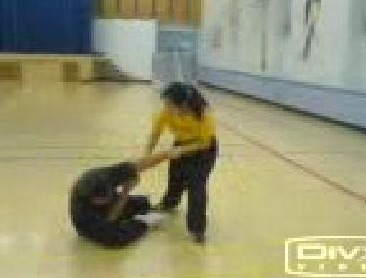REMEDY OF CHIN-NA INJURY

Chin-na is a compassionate art, its injury is reversible
Question
A key aspect of our Dim Mark training was first to learn how to remedy any ill effects of the applied skill/technique. As manipulation of energy is included in Chin Na, how important is knowledge of remedy to Chin Na training? Does such knowledge also extend to the more physical damage that can be caused, e.g. dit da?
As a follow up, if I may, can Chin Na be used for healing?
Sifu Andrew Barnett
Answer
A good training of dim mark will include remedying the injury caused. This is because dim mark injury is usually serious, sometimes causing death and often causing permanent disability if left unattended.
In our Dragon Strength course where dim mark was taught, our remedial methods by taking out the injury with our hands, like a crane beak, followed by energy flow, are every effective. Because the remedy was applied immediately, all “victims” recovered within half an hour.
It would take a longer time for most other people. It would also take a longer time for the victims to seek proper treatment. The usual remedies are herbal medicine, die da (pronounced like “thiet da”) or kungfu medicine, an-mo or massage therapy, and tui na which is also massage therapy. Such remedies may take about three months.
All our Shaolin Wahnam family members, including those who may not have learned chin-na or dim mark, are indeed very lucky – probably luckier than they realize. We have energy flow. Not only it can overcome chin-na and dim mark injuries speedier, as well as all other forms of illness, more importantly it gives us good health, vitality and longevity.
Remedy work is normally not included in chin-na training. This is because while chin-na will also disable opponents form further combat, chin-na injuries are usually not as serious as those of dim mark. But high-level chin-na masters can inflict more serious injury than dim mark, and in such cases these masters usually know remedial work.
Remedial work in chin-na and dim mark is limited to chin-na and dim mark injuries. A knowledge of such remedial work enables him to treat chin-na and dim mark injuries competently but does not extend to treatment of other injuries, including those caused by physical damage, like those injuries in “die da” or kungfu medicine.
A kungfu medicine doctor is a professional. He is comprehensively trained in traditional Chinese medicine in general, and in injuries caused by falling or being hit in particular. A chin-na or dim mark master who knows remedial work on chin-na or dim mark injuries is not comprehensively trained in traditional Chinese medicine; he only knows treatment of chin-na or dim mark injuries caused by him.
However, many kungfu medicine practitioners today are not comprehensively trained in traditional Chinese medicine, but some of them are very good at their work, better in treating injuries than comprehensively trained Chinese doctors, who generally treat illness, not injury.
In Chinese medical philosophy, a distinction is made between illness and injury. Treating an injury as an illness, or vice versa, may be detrimental. In the same way, although chin-na or dim mark masters with knowledge and practice of remedial work may not be as widely trained in treatment of injuries as “die da” practitioners, the masters’ treatment of chin-na or dim mark injuries may be better than that of “die da” practitioners.
Chin-na is not used for healing. But if all other things were equal, a chin-na practitioner who has knowledge and practice of remedial work and if he also has studied healing, will be a better healer than other healers. He has at least some knowledge of energy network, and forceful hands to manipulate in his healing if necessary. However, he must make sure that if he uses his hands for manipulation work in healing, he must not use them as if he were applying chin-na techniques.
The questions and answers are reproduced from the thread 10 Questions on the 72 Shaolin Arts in the Shaolin Wahnam Discussion Forum.
LINKS
